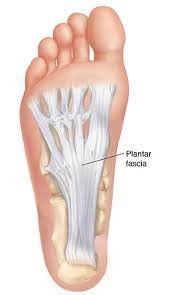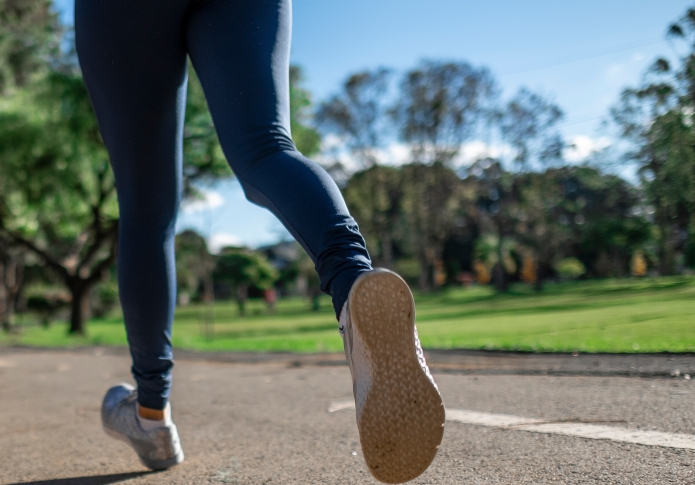What is Plantar Fasciopathy (“Plantar Fasciitis”)
Plantar (bottom of the foot) heel pain is something we see very often in clinic, and tends to be extremely frustrating and debilitating for the sufferer.
Pain in this area is typically due to an increase in sensitisation around the insertion of the plantar fascia, a thick band of collagen that runs between the heel and the balls of the feet. The plantar fascia has an important role in the biomechanics of the foot, providing structure to the arch and aiding in propulsion during the gait cycle. When excessive load is placed through the feet, either by prolonged standing or walking, increased volume of running, poor biomechanics, or even increased bodyweight, the structure can become overloaded and start producing pain.

Patients will often complain of pain particularly upon the first few steps in the morning. The pain may ease with activity, only to return again following cessation.
This condition was for a long time referred to as “plantar fasciitis”, as the belief was that the pain was caused by a persistent inflammation of the fascia, and treatment focused on stretching, orthotic prescription and analgesic modalities such as ice. We now understand the nature of this pathology to be more like that of persistent tendon pain, whereby the issue is less of an inflammatory one and more related to change in the structure of the collagen and general increase in sensitivity. Therefore the medical community as a whole has opted for more appropriate terms such as plantar fasciopathy or plantar heel pain. Many patients will have gone through medical investigations including x-ray, and may have been identified as having a calcaneal bone spur. This was for a long time thought to be the cause of pain in the heel, however we now understand that whilst the prevalence of these spurs is much higher in those individuals with a history of heel pain, it isn’t the bone spur itself that causes the pain, and resolution of symptoms is likely without addressing the spur directly.
The treatment for plantar fasciopathy begins with addressing the likely causative factors. These may be changes in activity load, biomechanics (i.e. running gate, relative weakness/tightness of muscles etc.), changes in body weight etc. For active individuals this may require a period of decreased exercise, or temporarily switching to alternative exercise modalities. Another important aspect of the initial management is education regarding the nature of the condition, and setting realistic time frames for recovery, as plantar fasciopathy is notorious for taking a long time to resolve. Once a baseline of activity modification adequate for improvement in symptoms has been identified, load can be gradually increased based on the pain response.
In the early stages, rubber heel cupping, taping, and orthotics may aid in settling symptoms. As early as possible, strengthening exercises should be commenced to improve the strength, endurance and power of the local muscles, as well as improving the load tolerance capacity of the plantar fascia itself, which will decrease its likelihood of being overloaded and causing pain. These should be progressed to functional conditioning work specific to the activity that the individual is aiming to return to.
Other Causes of Heel Pain
In addition to plantar fasciopathy, there are several other conditions that may cause pain in the base of the heel, including bruising of the fat pad, stress fracture of the heel, systemic rheumatological conditions, as well as entrapment of nerves around the foot and ankle. As these conditions can all mimic the typical presentation of plantar fasciopathy, it is important that the condition is evaluated by an experienced orthopedic medical professional, as the management for these conditions will differ, and incorrect treatment could cause a delay in resolution or even a worsening of the condition.
If you are suffering heel pain don’t hesitate to get in contact with us so that we can get you on the path to recovery as soon as possible.
Sam Gilbert is the co-founder and clinical director of Club 360. He has a bachelor’s degree in physiotherapy and a master’s degree in exercise science.

